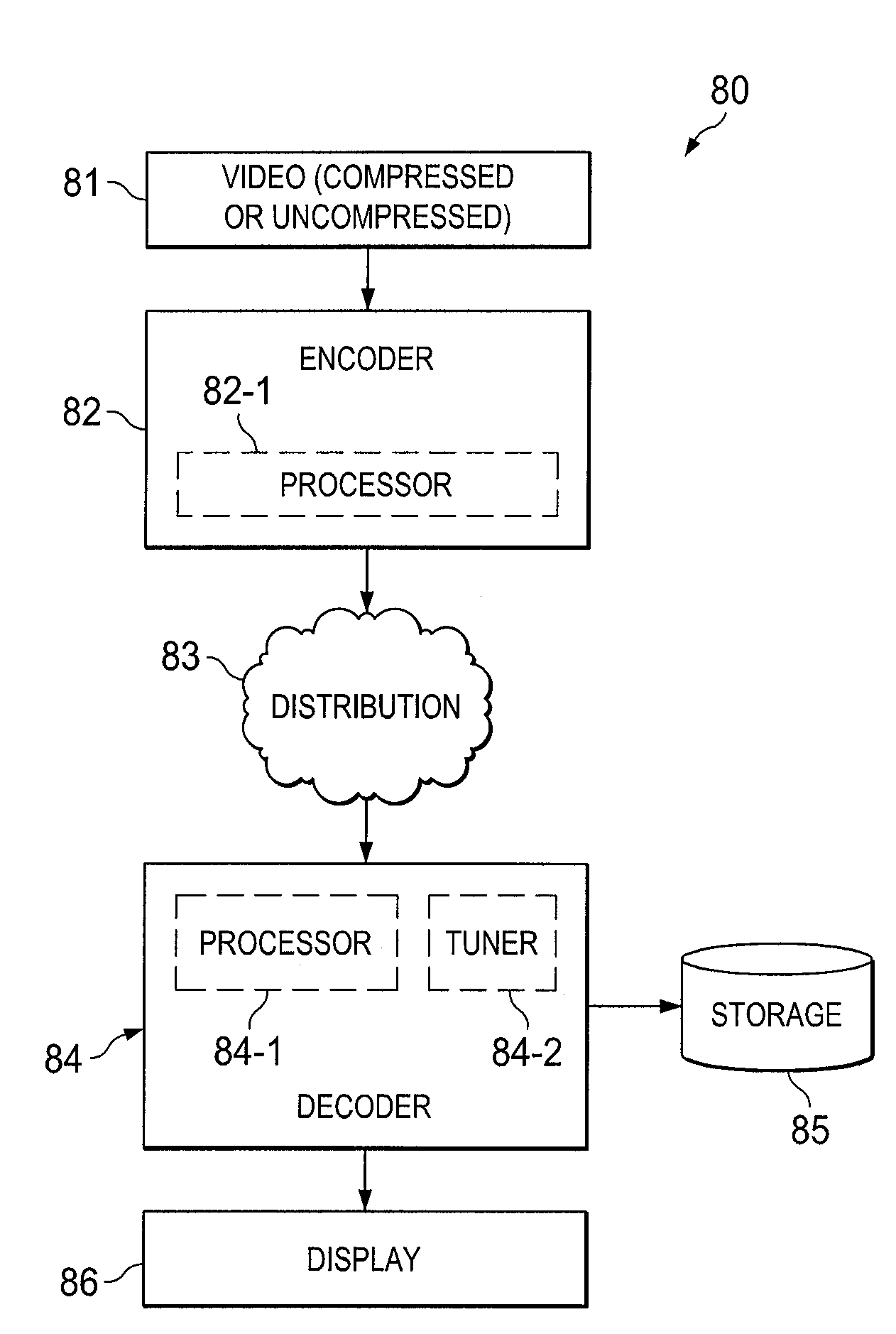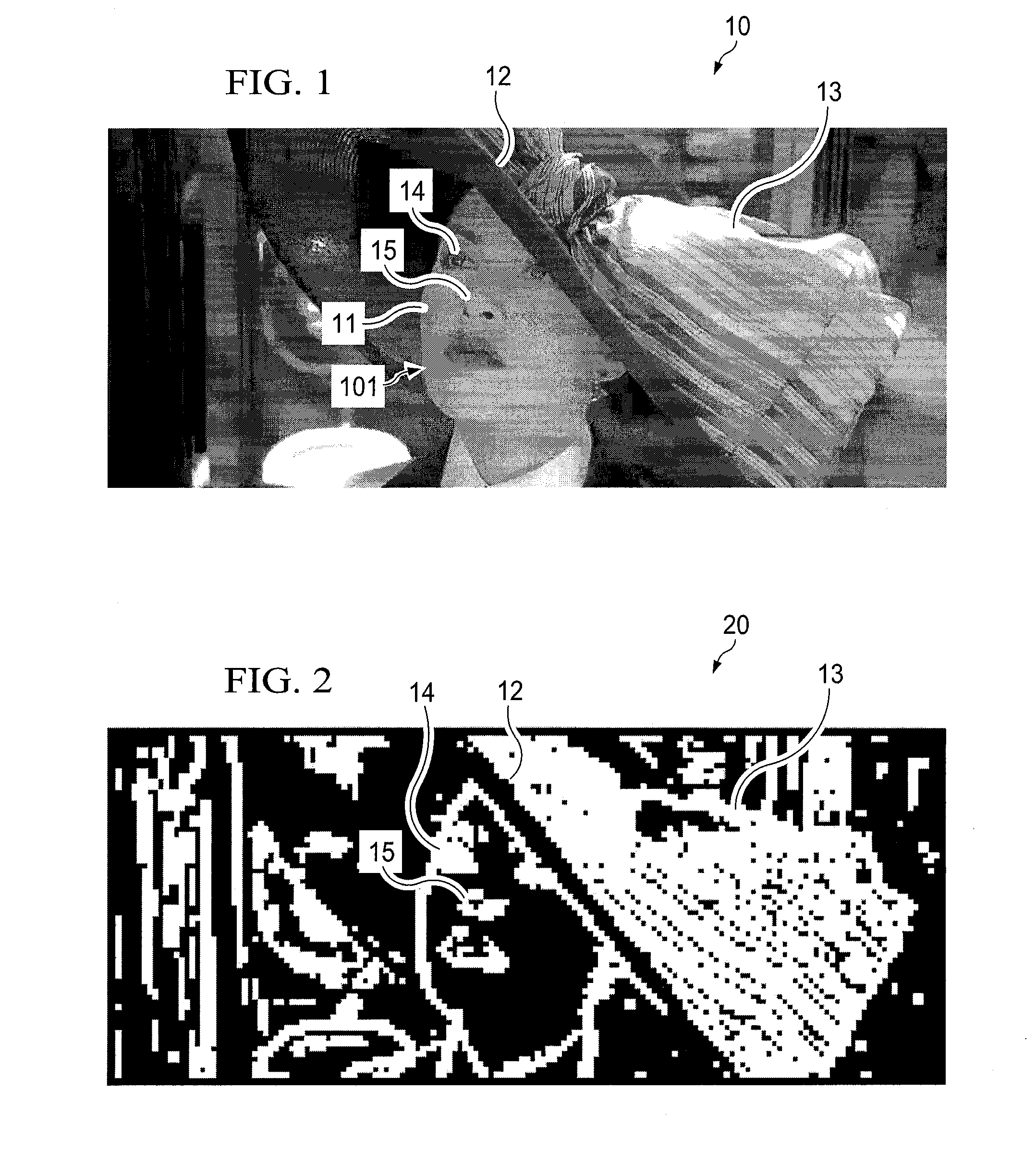Systems and methods for improving the quality of compressed video signals by smoothing block artifacts
- Summary
- Abstract
- Description
- Claims
- Application Information
AI Technical Summary
Benefits of technology
Problems solved by technology
Method used
Image
Examples
Embodiment Construction
[0036]One aspect of the disclosed embodiment is to attenuate the appearance of block artifacts in real-time video signals by identifying a region in each frame of the video signal for deblocking using flatness criteria and discontinuity criteria. Additional gradient criteria can be combined to further improve robustness. Using these concepts, the size of the video file (or the number of bits required in a transmission of the video signals) can be reduced since the visual effects of artifacts associated with the reduced file size can be reduced.
[0037]One embodiment of a method to perform these concepts consists of three parts with respect to image frames of the video signal:
[0038]1. A process to identify a Deblock region (DEB) that distinguishes the Deblock region from a so-called Detail region (DET);
[0039]2. An operation applied to the Deblock region DEB for the purposes of attenuating, by spatial smoothing, the appearance of block artifacts in the Deblock Region; and
[0040]3. A proc...
PUM
 Login to View More
Login to View More Abstract
Description
Claims
Application Information
 Login to View More
Login to View More - R&D
- Intellectual Property
- Life Sciences
- Materials
- Tech Scout
- Unparalleled Data Quality
- Higher Quality Content
- 60% Fewer Hallucinations
Browse by: Latest US Patents, China's latest patents, Technical Efficacy Thesaurus, Application Domain, Technology Topic, Popular Technical Reports.
© 2025 PatSnap. All rights reserved.Legal|Privacy policy|Modern Slavery Act Transparency Statement|Sitemap|About US| Contact US: help@patsnap.com



